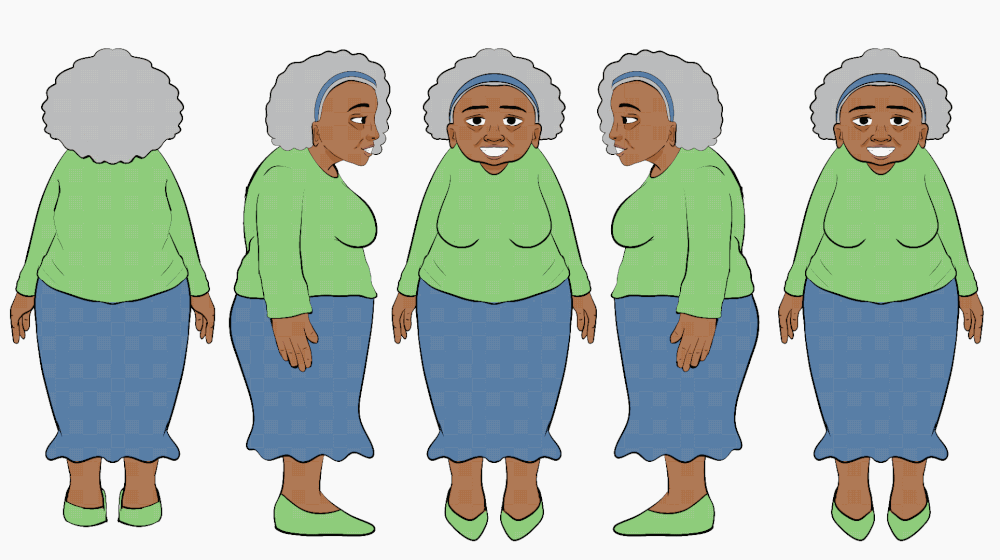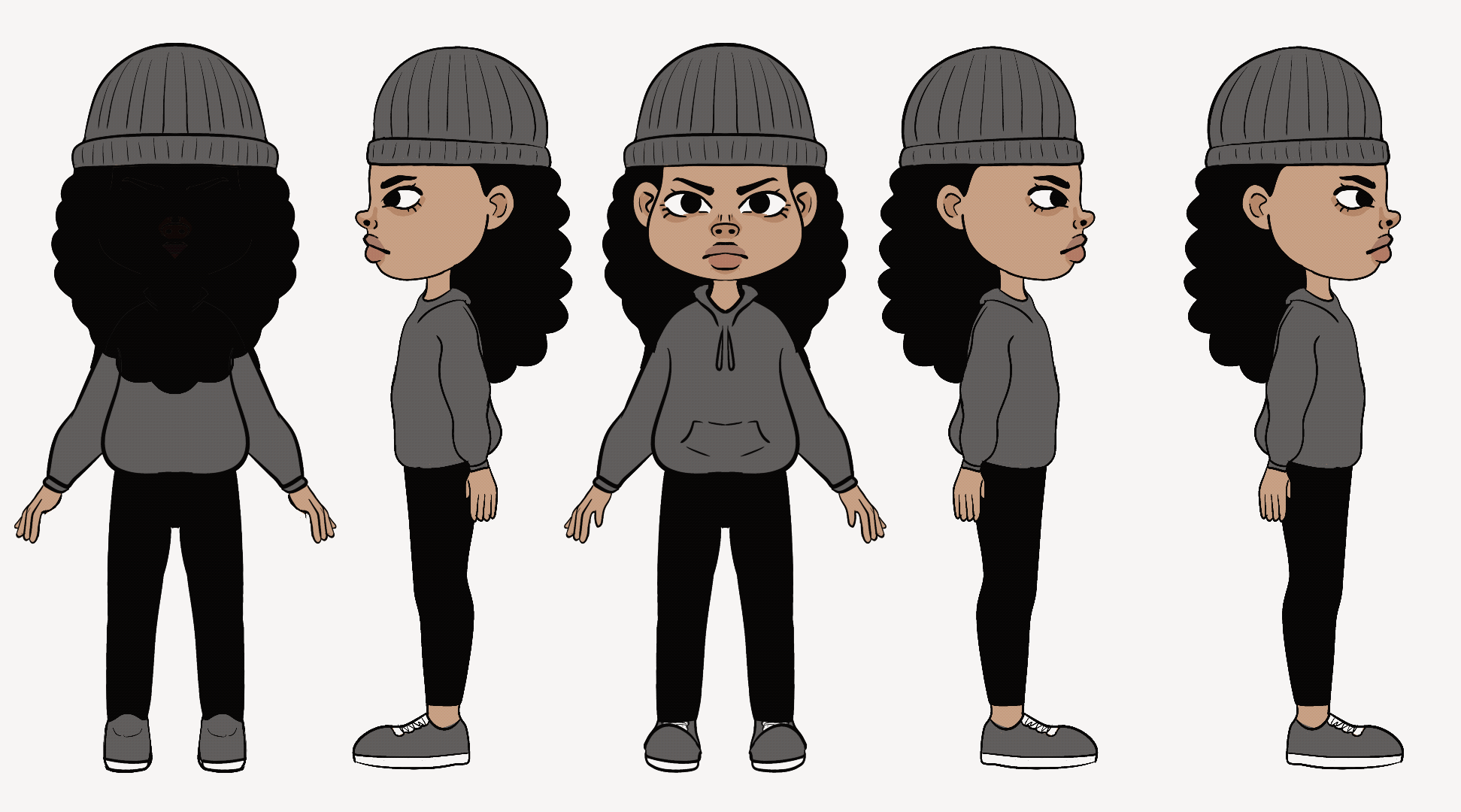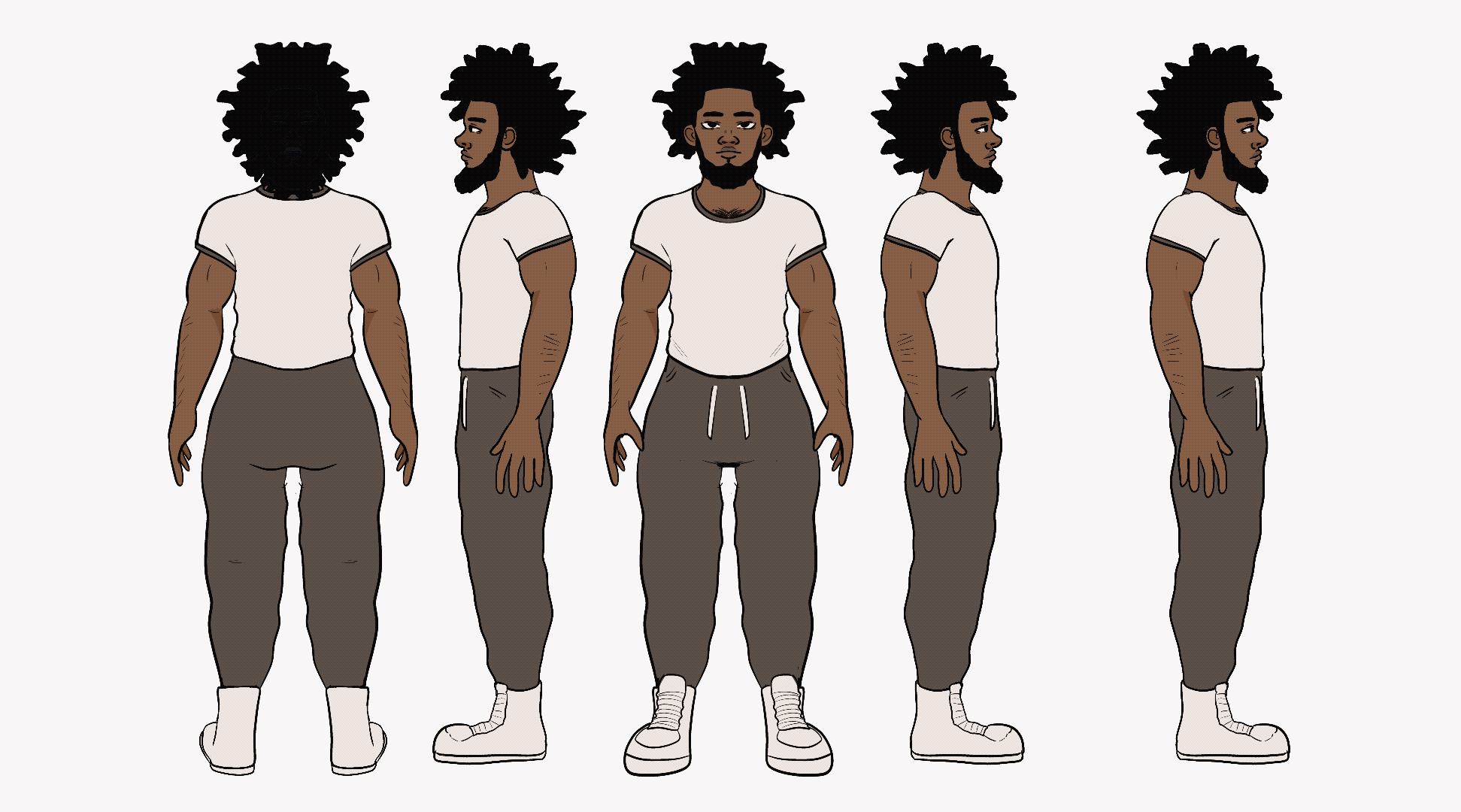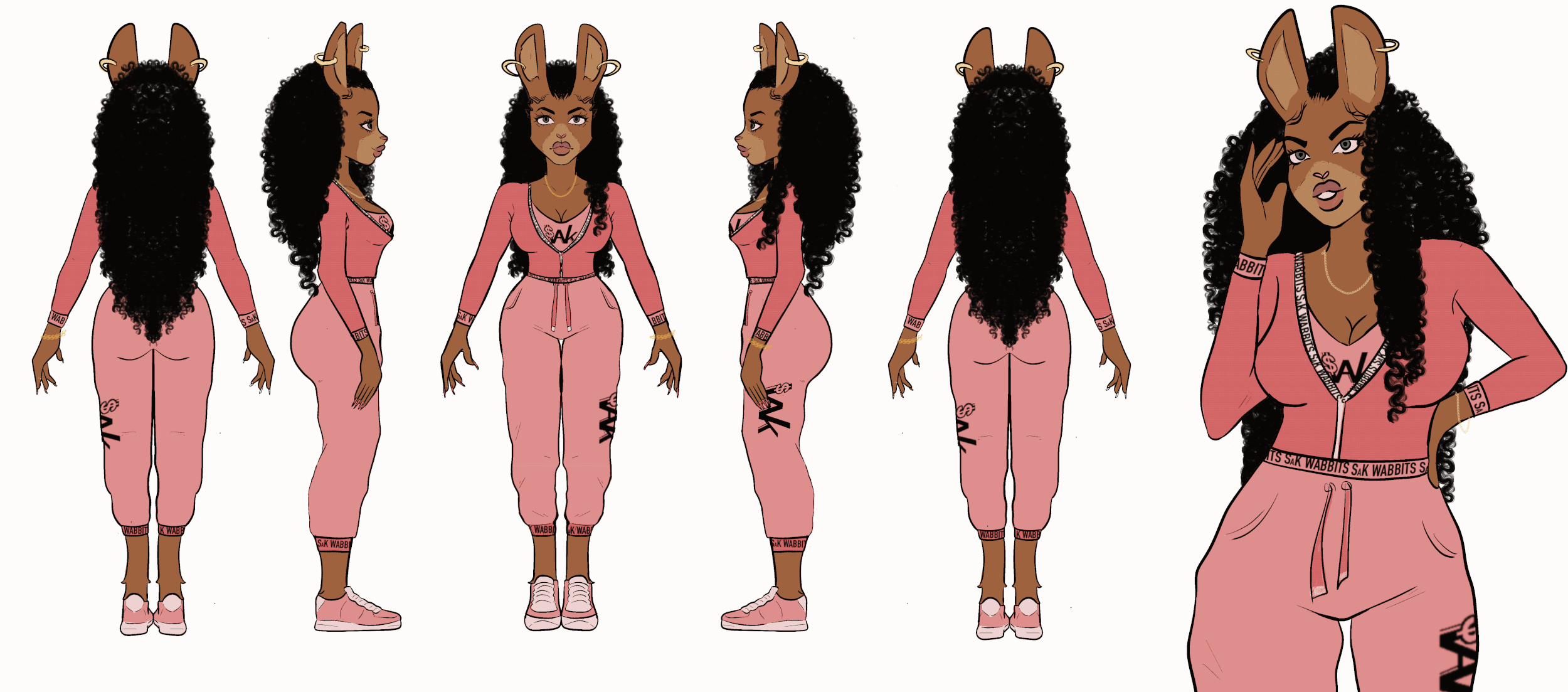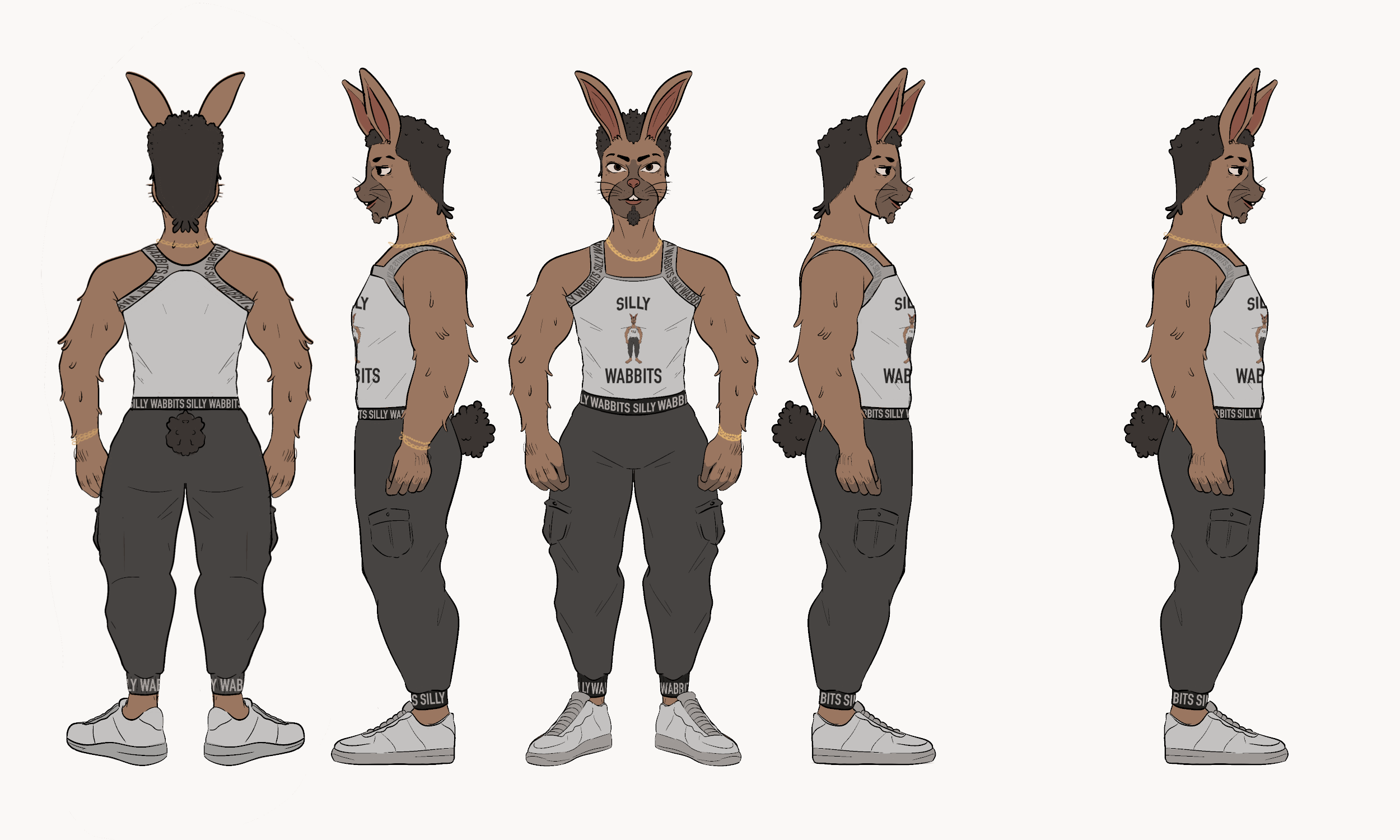Why Character Turnarounds are Essential for Your Brand: A Comprehensive Guide
Let’s talk about something super important if you’re into characters, whether it’s for your business, a story, an animated music video, or just for fun: character turnarounds. These are essential if you want your character to look awesome from every angle, especially if they’re going to appear in different poses or animations.
Think about it—if you have a mascot for your business, a character in your story, or even a mini cartoon version of yourself that you use in videos, a character turnaround is a must. It ensures your character looks consistent and recognizable, no matter where or how they show up.
What is a Character Turnaround?
So, what exactly is a character turnaround? Simply put, it’s a series of drawings that show your character from multiple angles. This gives you a comprehensive view of your character, making it easier to draw them accurately from any perspective.
The purpose of a character turnaround is to nail down your character’s design so it stays consistent. Whether you’re creating illustrations, animations, or merchandise, having all these angles covered is crucial.
How Turnarounds Elevate Your Brand
Enhancing Brand Identity, Recognition, and Recall: Consistent character representation is a game-changer for your brand identity. When your character looks the same everywhere, it strengthens your brand and makes it more recognizable. People are way more likely to remember your brand if your character is always spot-on. Think of iconic characters like Mickey Mouse or the Geico Gecko—recognizable and memorable due to their consistent design.
Ensuring Consistency Across Media: Keeping your character uniform across different media platforms is crucial. Whether it’s on your website, in a commercial, or on social media, a consistent character prevents any confusion or disengagement. Your audience knows what to expect, and that builds trust. For example, if your character looks one way on your website but different in your advertisements, it can confuse your audience and dilute your brand identity.
Streamlining Animation and Illustration Processes: Character turnarounds make life so much easier for animators and illustrators. They provide clear guidelines that save time and ensure everything looks accurate. No more guessing games—just straightforward, efficient work. Animators can jump straight into animating, knowing exactly how the character should look from every angle, reducing the need for revisions and ensuring a smooth production process.
Improving Merchandise Options and Providing Marketing Flexibility: When your character design is consistent, creating merchandise becomes a breeze. From T-shirts to mugs, you can offer a variety of products that all feature your character looking its best. Plus, a versatile character gives you tons of flexibility in your marketing campaigns. You can easily adapt the character for different themes, holidays, or special events, keeping your marketing fresh and engaging.
Attracting and Engaging Audiences: A well-designed character isn’t just about looks—it’s about connection. A relatable, visually appealing character can captivate your audience and keep them coming back for more. It enhances your storytelling, making your brand more engaging and memorable. Think of how much more compelling your content becomes when your audience can connect emotionally with your character.
Character turnarounds are more than just a tool for artists—they’re a powerful asset for your brand. So, make sure your characters are ready to shine from every angle!
Essential Views in a Character Turnaround
When you're creating a character turnaround, there are a few key views you need to nail down:
Front View: This is your character head-on. It's the first thing people will see, so make it count.
Back View: Don’t neglect the back! It’s important for a complete 360-degree view. Your character might need to walk away from the camera, and having a well-drawn back view ensures they look good from all angles.
Side Views (Left and Right): These show your character from both sides. Even if they're symmetrical, it’s good practice to draw both. This helps in understanding the character's profile and how they might look in motion.
3/4 Poses (Front and Back): These angles give more depth and dimension to your character. They’re super useful for showing off personality and movement. 3/4 views are often used in animation and illustrations because they provide a dynamic perspective.
Creating a Smoothly Rotating Character
To get that smooth, rotating character effect, aligning each view precisely is key. Here’s how to make sure everything lines up perfectly:
Start with Guidelines: Use consistent guidelines across all views. This helps keep proportions in check. Draw horizontal and vertical lines that intersect at key points of your character’s anatomy.
Check Proportions: Regularly compare your views to make sure they match up. If the head is a certain size in the front view, it should be the same in the side view. Use tools like calipers or digital measuring tools to ensure accuracy.
Layer and Rotate: Use software that allows you to layer and rotate your character views. This helps you spot and fix any misalignments quickly. Programs like Photoshop or Procreate can be very helpful here.
Smooth Transitions: Ensure each view transitions smoothly into the next. This makes the rotation look seamless and professional. When you can flip between views without any noticeable jumps, you know you’ve got it right.
By focusing on these details, you’ll create a turnaround that not only looks great but also functions perfectly for animation and illustration.
Beyond Turnarounds: Key Poses and Character Expressions
Once you’ve got your character turnaround sorted, it’s time to think about key poses and expressions.
Key poses are those essential positions your character will take in different scenarios. Think of them as the highlights of your character’s movement and action. They help in planning animations and ensuring your character moves naturally. For instance, if your character is a superhero, key poses might include flying, landing, and a hero stance.
Character expressions are all about conveying emotion. They bring your character to life by showing their feelings and reactions. Whether your character is happy, sad, angry, or surprised, these expressions enhance your storytelling and make your character more relatable. Expressions can convey a lot of information quickly and can significantly impact how your audience perceives your character.
Together, key poses and expressions add depth to your character turnaround. While the turnaround gives you the full view, key poses show how your character moves, and expressions reveal their personality. It’s the complete package for a dynamic and engaging character. This combination allows for a more thorough understanding of your character’s capabilities and emotional range, which is essential for both storytelling and branding.
To wrap things up, character turnarounds are crucial whether you’re designing a mascot, story character, or your cartoon alter-ego. They ensure consistency, streamline your creative process, and make your character more memorable.
Investing time in detailed turnarounds pays off big time. Not only do they elevate your brand identity, but they also make your life easier when it comes to animation and illustration. Plus, they enhance audience engagement by presenting a professional, cohesive image.
Need a character design of your own? We love creating mascots and characters! Fill out our Client Application Form to get started. Let’s bring your characters to life from every angle!

